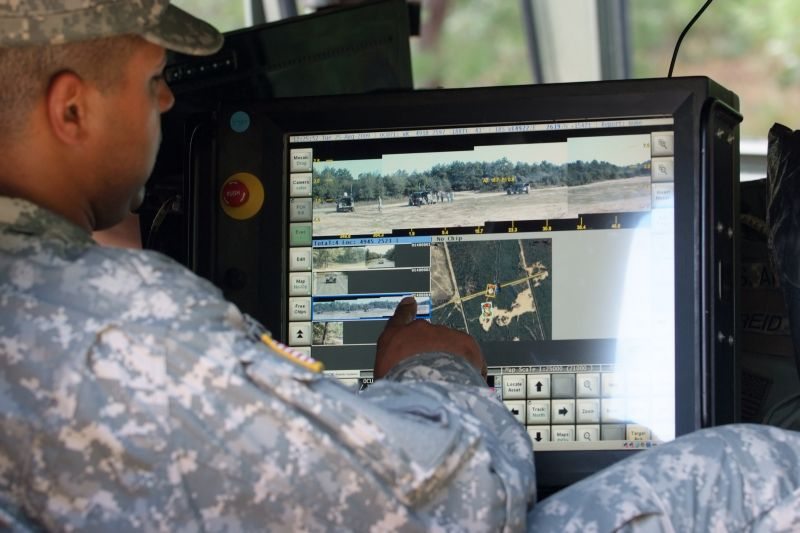This report offers detailed analysis of the global C2/C4ISR market over the next ten years, and provides extensive market size forecasts by country and sub sector. It covers the key technological and market trends in the C2/C4ISR market. It further lays out an analysis of the factors influencing the demand for C2/C4ISR, and the challenges faced by industry participants.
In particular, it provides an in-depth analysis of the following:
- Global C2/C4ISR market size and drivers: comprehensive analysis of the global C2/C4ISR market through 2011–2021, including highlights of the demand drivers and growth stimulators for C2/C4ISR. It also provides an insight on the spending pattern and modernization pattern in different regions around the world.
- Recent development and industry challenges: insights into technological developments in the global C2/C4ISR market, and an extensive analysis of the changing preferences of armed forces around the world. It also provides the current consolidation trends in the industry and the challenges faced by industry participants.
- SWOT analysis of the global C2/C4ISR market: exhaustive analysis of industry characteristics, determining the strengths, weaknesses, opportunities and threats faced by the C2/C4ISR market.
- Global C2/C4ISR market-country analysis: analysis of the key markets in each region, providing an analysis of the top segments of C2/C4ISR expected to be in demand.
- Major programs: details of the major programs in each segment expected to be executed during the forecast period.
- Competitive landscape and strategic insights: detailed analysis of competitive landscape of the global C2/C4ISR industry. It provides an overview of key C2/C4ISR manufacturers catering to the global C2/C4ISR sector, together with insights such as key alliances, strategic initiatives and a brief financial analysis.
Scope
- Analysis of the global C2/C4ISR market size from 2011 through 2021
- Analysis of defense budget spending pattern by region
- Insights on the region wise defense modernization initiatives
- Sub-sector analysis of the C2/C4ISR market
- Analysis of key global C2/C4ISR market by country
- Key competitor profiling specifically focusing on the global C2/C4ISR market
Reasons to Buy
- Gain insight into the global C2/C4ISR market with current and forecast market values
- Get insight on key drivers and attractiveness parameters of the global C2/C4ISR market
- Provides detailed analysis of the defense spending pattern including forecasts of military spending till 2021 by region
- Gain insight into various defense modernization initiatives around the world
- Gain insight into various factors impacting the growth of the global C2/C4ISR market
- Gain comprehensive sub-sector market analysis including market values and forecasts of the leading defense spending nations of the world
- Provides a thorough analysis of the recent developments in the global C2/C4ISR including technological trends, industry consolidation trend, and key challenges
- Provides detailed information of the leading C2/C4ISR programs of major defense spending countries across of the world
- Detailed profiles of 20 leading global C2/C4ISR and related systems manufacturing companies across the world including products and services, key alliances, contracts, and recent developments pertaining to the global C2/C4ISR segment.
Key Highlights
Global spending on C2/C4ISR systems is expected to remain robust over the forecast period, primarily due to the increased importance of C2/C4ISR systems in modern or fourth-generation warfare. Modern conflicts include a mix of physical combat, mental and tactical elements, where the enemy could be a nation or a faction of society such as a terrorist group. In such situations, C2/C4ISR systems are considered by most nations to be the most important tools for victory. The market which consists of land, space, naval and airborne systems, is expected to increase from US$16.2 billion in 2011, to US$21.8 billion by 2021 increasing at a CAGR of 2.98%. This is primarily because key markets, such as the US, are expected to prioritize spending on C2/C4ISR systems; an element of defense spending that was not given much importance until the Afghan and Iraqi conflicts. Land-based systems are expected to account for the majority of the global C2/C4ISR market, followed by airborne, naval and space systems. Over the forecast period, cumulative global expenditure on C2/C4ISR systems is forecast to value US$209.1 billion.
Keywords
Defense, global C2/C4ISR, land based C2/C4ISR, space based C2/C4ISR, airborne C2/C4ISR, naval C2/C4ISR, Communications and Electronics Command (CECOM) Rapid Response – Third Generation (R2-3G) program, Strategic Services Sourcing (S3) program, Laser Infrared Targeting and Navigating (LITENING) Targeting Pod System, Command Hardware Systems-4 ,US Special Operations Command (USSOCOM) system,Communication Navigation and Surveillance/Air Traffic Management, Global Navigation Satellite System , Indian Regional Navigational Satellite System,Advanced Extremely High Frequency Satellite Vehicle (SV4),Wideband Global SATCOM Program ,Mission Planning Enterprise Contract-II (MPEC-II),Active Electronically Scanning Array (AESA) radars, Global Navigation Satellite Systems (Glonass), SISFRON program, SISGAAZ program, The Green Pine, EWTS, EMP bomb,ARTHUR artillery tracing radars, Advanced Countermeasures Electronic Systems Electronic Warfare Systems (ACES), AN/MPQ-64F1 Improved Sentinel radars, airborne radios, Sniper Advanced Targeting Pods (ATPs),Mirage F1 communication systems,Network for Spectrum ,Global Positioning System/Inertial Navigation Systems,Traffic Collision Avoidance Systems, Mode S Transponders, Mode 4/5 Identification Friend or Foe Encryption, High Frequency radio replacements, Multifunctional Information Display Systems for Link 16 operations, Have Quick II radios, Satellite Communications and Common Secure Voice encryptions,Wideband Global SATCOM system (WGS)










